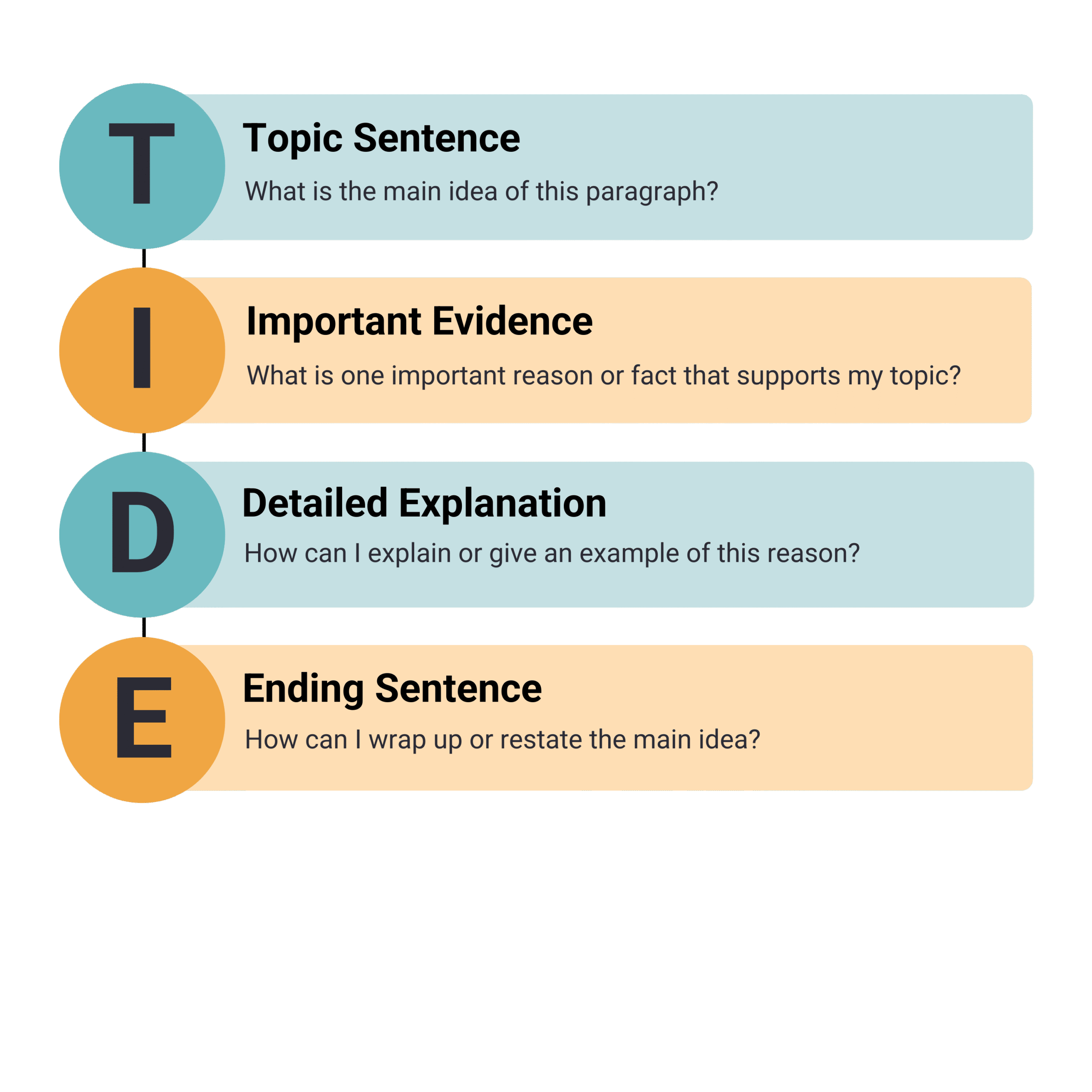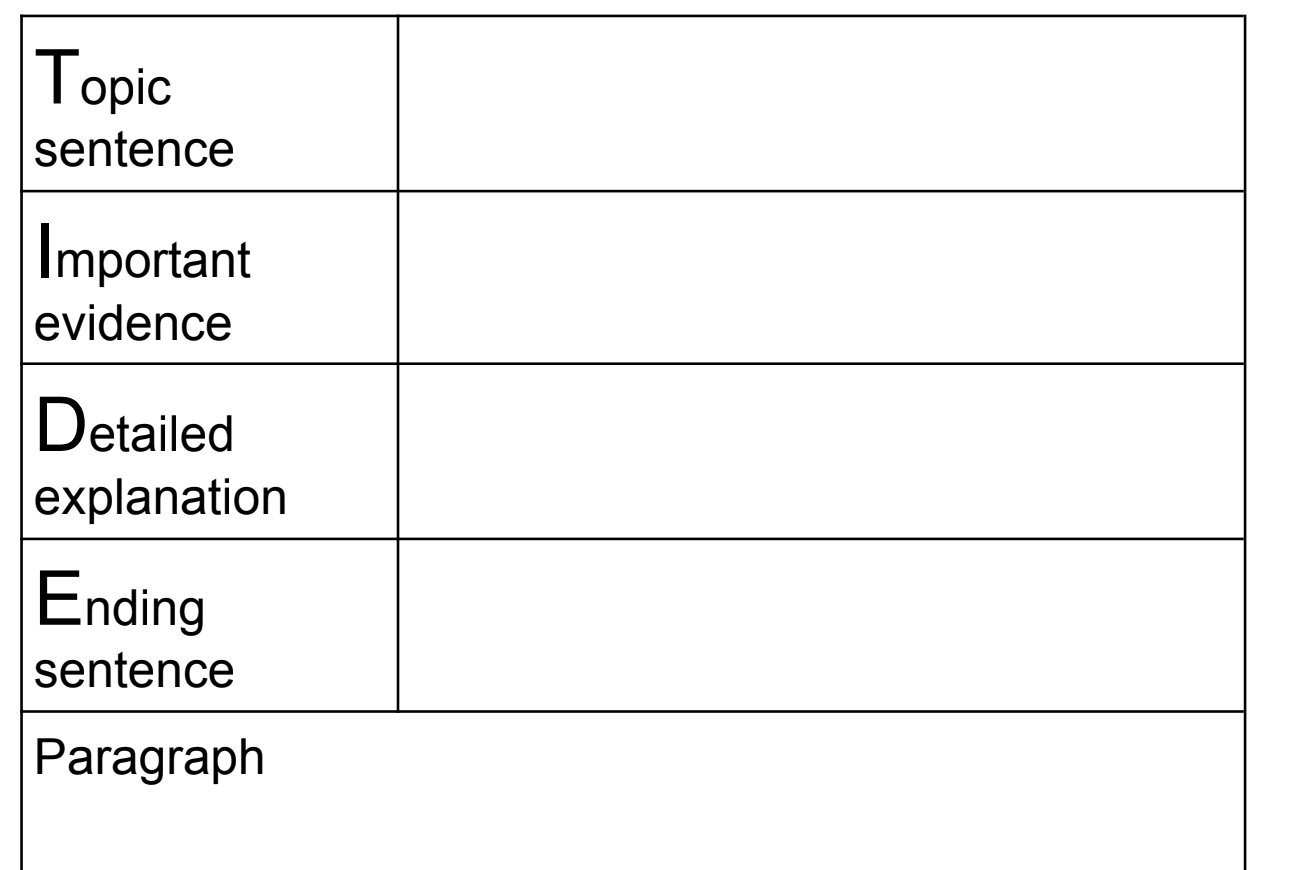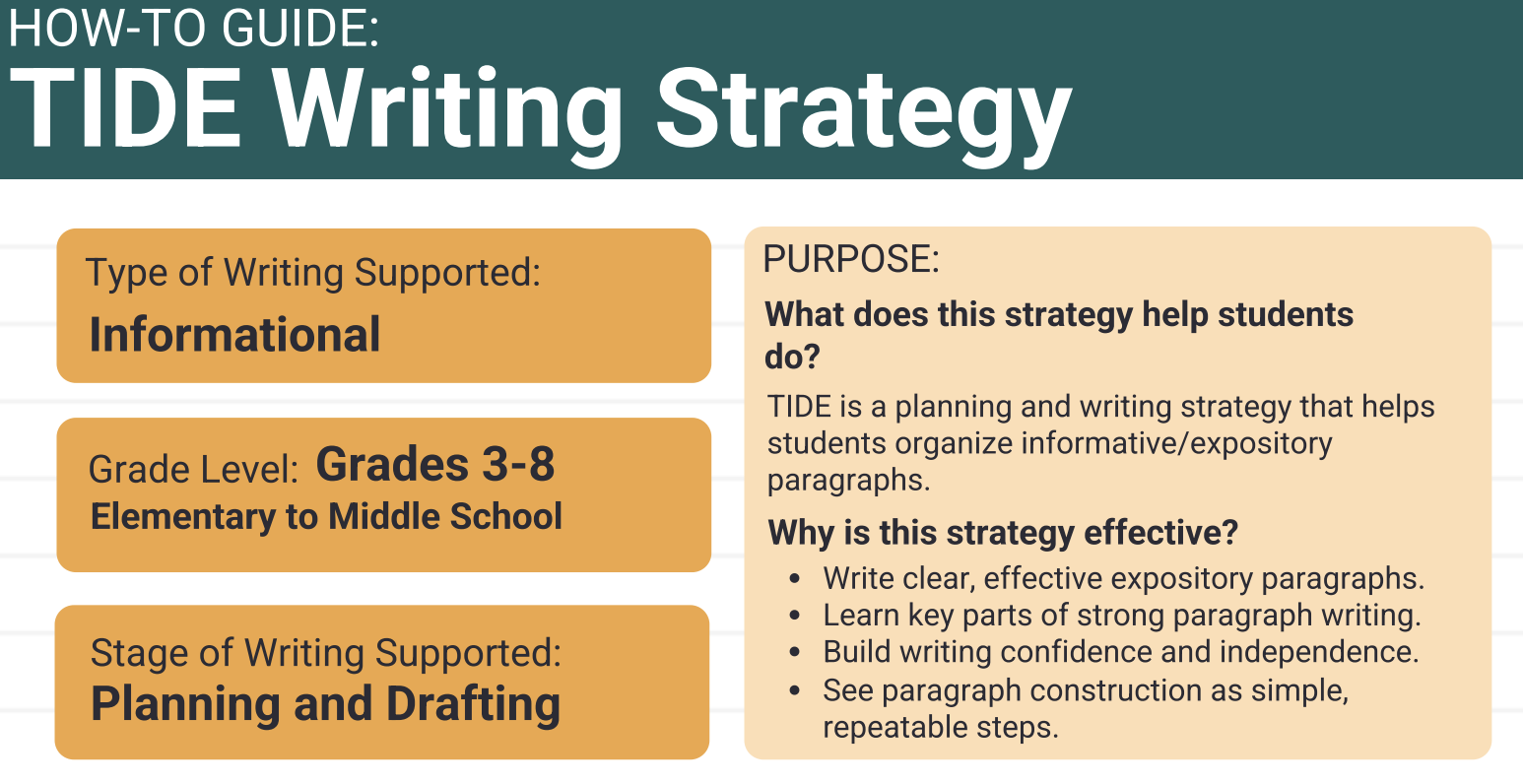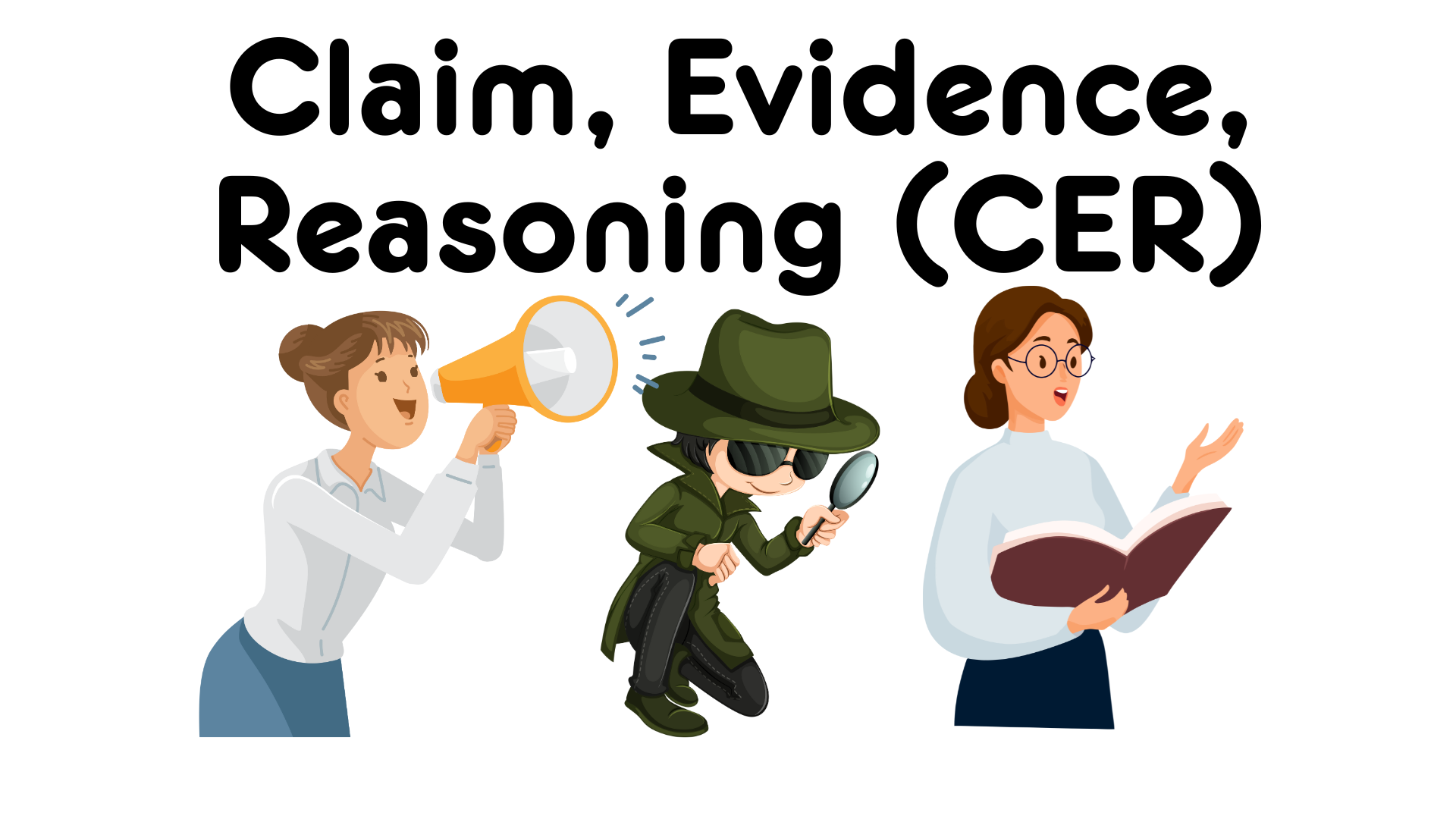Topic, Important, Detailed, Ending (TIDE) Strategy
Strategy Parameters
- Genre: informational
- Grade level: 3-5, 6-8
- Writing Stage: planning, drafting
At-A-Glance
TIDE is a structured strategy for planning and writing informative paragraphs by organizing ideas into four sequential components: Topic Sentence, Important Evidence, Detailed Explanation, and Ending Sentence.

Overview
The TIDE strategy provides students with a clear framework for constructing expository paragraphs, ensuring their writing is organized and logical. By breaking down paragraph construction into four distinct steps (T, I, D, E), the approach demystifies the writing process and makes it feel less overwhelming for learners. This systematic method is designed to enhance clarity and coherence in writing, ultimately fostering confidence and independence in student writers.
Purpose and Benefits
This strategy helps students:
-
Establish a logical structure for their informational writing and formal arguments.
-
Guide them to make an initial claim (Topic Sentence) and provide necessary support (Evidence and Explanation).
-
Improve the overall clarity and coherence of their paragraph-level writing by ensuring all parts connect.
-
Make the process of writing well-developed paragraphs more transparent and less intimidating.
-
Develop critical thinking skills by requiring them to justify their points with specific reasons and examples.
Why It's Effective
-
It uses a simple, memorable acronym (TIDE) to act as a readily available scaffold for the planning and drafting stages.
-
The sequential steps ensure that the key components of a strong expository paragraph are included in the correct order.
-
The inclusion of guiding questions for each step helps students internalize the required function of each sentence type.
-
It directly addresses the issue of shallow writing by mandating a Detailed Explanation that forces students to elaborate on their evidence.
-
The focus on the Ending Sentence reinforces the paragraph’s main idea, securing the reader’s understanding of the topic.
Downloads





